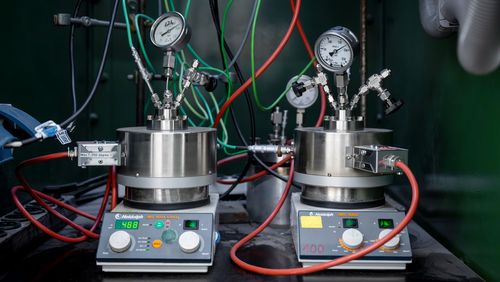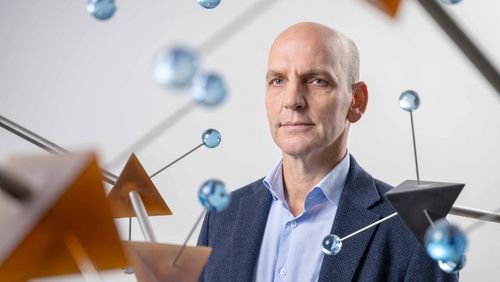
Artificial photosynthesis
Plants have been removing carbon dioxide from the atmosphere for millions of years. Now, at the Max-Planck-Institut für Kohlenforschung in Mülheim an der Ruhr, Nobel laureate Benjamin List wants to imitate the basic principle of photosynthesis. His idea is to develop an elegant chemical reaction to convert CO2 directly into coal.
Carbon capture is an essential technology in the fight against global warming. To enable the large-scale removal of the greenhouse gas from the atmosphere, Chemistry Nobel laureate Benjamin List at the Max-Planck-Institut für Kohlenforschung wants to enable the photocatalytic reduction of CO2.
The idea for the undertaking stems from nature: for millions of years, plants have been performing photosynthesis to split CO2and remove it from the atmosphere in the form of carbohydrates. Benjamin List wants to reproduce the process in the lab, simplify it and then implement it on a large scale. Specifically, he wants to convert carbon dioxide (CO2) into carbon (C) and oxygen (O2) by means of light energy. Written as a chemical equation, the reaction is CO2 → C + O2.
Realising this direct, photocatalytic reduction of carbon dioxide would be the “perfect chemical reaction”. And although replacing fossil energy carriers remains the most important step in combating global warming, it’s already abundantly clear that this alone won’t solve the problem. Indeed, humans have already emitted so much CO2 into the atmosphere that large quantities of the greenhouse gas must be removed again. Benjamin List’s reaction could make this possible.
The great advantage List’s vision has over other ideas and methods for extracting carbon dioxide from the atmosphere is that it generates carbon in its pure form: coal, which is much easier and safer to store than gaseous CO2. Moreover, this “solar carbon” could be used as a basis in a sustainable chemical industry for producing ecological petrol and generating electricity, or as a building material for houses or roads.
The Mülheim team must first identify the methods and approaches needed to realise the reaction. In this regard, List has already designed catalysis cycles that, at least theoretically, enable light-driven CO2 splitting. Another idea is biocatalysis by means of microbes and bacteria capable of producing coal from CO2.
Facts and figures
Project leader
Prof. Dr Benjamin List, Max-Planck-Institut für Kohlenforschung, Mülheim an der Ruhr
Project
At the Max-Planck-Institut für Kohlenforschung, Nobel laureate Benjamin List is working on the photocatalytic reduction of CO2. By using the right catalysts and sunlight, he hopes to convert carbon dioxide (CO2) into pure carbon (C) and oxygen (O2). The method could potentially facilitate the large-scale removal of carbon dioxide from the atmosphere.
Funding from the Werner Siemens Foundation
10 million euros
Project duration
2025–2034

